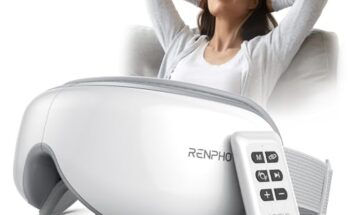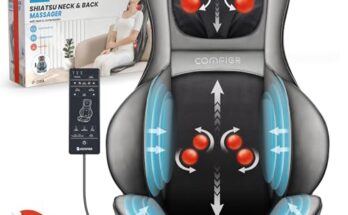Both Thai and deep tissue massages offer unique benefits; the choice ultimately depends on individual preferences and needs. Thai massage involves stretching and gentle pressure to improve flexibility and relaxation.
On the other hand, deep tissue massage targets deeper layers of muscles to alleviate chronic tension and pain. Both are effective, but it’s essential to consider your specific requirements and desired outcomes when selecting the best option for you. When deciding between Thai and deep tissue massages, it’s crucial to understand the distinctive characteristics and benefits of each technique.
Thailand’s traditional stretching and gentle pressure technique, known as Thai massage, aims to improve flexibility, reduce muscle tension, and promote relaxation. Conversely, the more intense deep tissue massage targets deeper layers of muscle and connective tissue to release chronic tension, alleviate pain, and enhance overall mobility. While both styles offer various advantages, the decision between the two largely depends on one’s specific needs and goals.
Comparing Thai And Deep Tissue Massage
When considering a massage therapy session, it’s important to understand the differences between various types of massages to choose the one that best suits your needs. In this article, we’ll compare Thai and Deep Tissue massages, focusing on their techniques, origins, pressure, and intensity.
Techniques And Origins
Thai massage, also known as “lazy yoga,” is a traditional healing technique that combines acupressure, energy balancing, and assisted yoga poses. Originating in Thailand, this ancient practice aims to stimulate the flow of energy throughout the body. On the other hand, Deep Tissue massage involves firm pressure and slow strokes to target the deeper layers of muscles and connective tissues, aiming to release chronic patterns of tension. The origins of Deep Tissue massage can be traced back to various bodywork traditions and was developed to address specific issues and injuries.
Pressure And Intensity
In Thai massage, the therapist uses rhythmic compression and stretching techniques to apply pressure along energy lines and points, promoting deep relaxation and improved flexibility. Conversely, Deep Tissue massage focuses on intense pressure to reach underlying muscle tissue and fascia, addressing knots and areas of chronic tension. The intensity of Deep Tissue massage can cause some discomfort, but the benefits include relief from muscle stiffness and pain.

Credit: www.design1.com
Benefits Of Thai Massage
Improved Flexibility
Thai massage involves a series of yoga-like stretches and movements which can contribute to improved flexibility. Through gentle pressure and stretches, Thai massage helps to lengthen and relax muscles, providing a greater range of motion for the body.
Energy Flow And Relaxation
Thai massage focuses on the body’s energy pathways, aiming to help improve energy flow and promote relaxation. This can lead to a sense of deep relaxation and rejuvenation, reducing stress and promoting overall well-being.
Benefits Of Deep Tissue Massage
Deep tissue massage provides a myriad of benefits, particularly in terms of muscle tension relief and injury rehabilitation.
Muscle Tension Relief
- Deep tissue massage focuses on targeting deeper layers of muscles.
- This can aid in releasing chronic tension and tightness in muscles.
- The intense pressure applied can help improve blood circulation.
Injury Rehabilitation
- Deep tissue massage is effective in rehabilitating injuries.
- It can help break down scar tissue and improve range of motion.
- Focused strokes can help speed up the healing process.

Credit: wellnessville.ph
Choosing The Right Massage For You
Selecting between Thai and deep tissue massage depends on your preferences. Thai massage uses stretching techniques, while deep tissue targets muscle tension for a more intense treatment. Consider your needs and comfort level to make the right choice.
When it comes to the different types of massages available, Thai and Deep Tissue have gained popularity among individuals seeking therapeutic benefits. Each massage targets specific areas of the body, and understanding the differences between them will help you determine which one is better suited to your needs. Considering some key factors can assist in making an informed decision. Let’s explore the Considerations and Personal Preferences to help you choose the right massage.
Considerations
When deciding on the type of massage that will benefit you the most, there are a few considerations worth keeping in mind:
- Goals: Determine what you want to achieve from the massage session. Whether it’s relaxation, pain relief, increased flexibility, or stress reduction, identifying your goals will help you select the appropriate technique.
- Medical Conditions: If you have any existing medical conditions or injuries, it’s crucial to consult with a healthcare professional or a qualified massage therapist. They can provide recommendations based on your particular needs and ensure the chosen massage doesn’t exacerbate any underlying issues.
- Budget: Consider your budget and the cost associated with each massage type. While the prices may vary, it’s essential to find the balance between your financial means and the potential benefits you will receive.
Personal Preferences
Aside from the practical considerations mentioned above, take into account your personal preferences:
- Sensations: Think about the sensations or pressure levels you prefer during a massage. Thai massages often involve stretching and compression techniques, which can be intense, while Deep Tissue massages typically target deeper layers of muscle tissue.
- Techniques: Consider the specific techniques employed in each massage. Thai massages involve assisted stretching, acupressure points, and energy line work. Deep Tissue massages primarily focus on slow strokes and intense pressure to relieve tension.
- Experience: Reflect on any past experiences you may have had with either Thai or Deep Tissue massages. If you found one technique to be more effective or enjoyable, that can be a determining factor in your decision.
Remember, the right massage for you ultimately depends on your unique preferences, goals, and individual needs. Consulting with a qualified massage therapist can provide further insight and guidance based on their expertise. Ultimately, prioritizing your well-being and selecting a massage technique that resonates with you will ensure a gratifying experience.
Final Verdict
When deciding between Thai and deep tissue massage, it ultimately depends on your personal preferences and specific needs. Thai massage offers stretching and compression techniques, while deep tissue massage focuses on releasing muscle tension and alleviating chronic pain. Consider consulting with a professional to determine which option is best for you.
After carefully examining the key differences and benefits of Thai massage and deep tissue massage, it can be concluded that both therapies offer unique advantages. The better choice ultimately depends on your personal preferences and specific needs. Let’s summarize the overall impact of each massage technique and delve into the importance of a personalized experience.
Overall Impact
Thai massage, with its ancient roots and actively stretching and manipulating techniques, provides a comprehensive approach to relieve tension, increase flexibility, and promote overall well-being. The combination of acupressure and yoga-like movements invigorates the body and improves energy flow.
On the other hand, deep tissue massage targets the deeper layers of muscles, fascia, and connective tissues, using slower, more forceful strokes. Its primary objective is to alleviate chronic muscle tension, treat specific musculoskeletal issues, and enhance postural alignment.
It’s important to note that both massage styles can help reduce stress, improve circulation, and alleviate muscle soreness, but they do so in different ways. Thai massage stimulates the body’s energy lines, while deep tissue massage focuses on releasing tight knots and adhesions.
Personalized Experience
When it comes to the question of which massage is better, it is crucial to consider your specific needs and preferences. Thai massage is ideal for those who seek an invigorating and energizing experience, as it combines stretching, compression, and joint mobilization techniques.
On the other hand, deep tissue massage is often favored by individuals dealing with chronic pain, limited mobility, or specific musculoskeletal issues. This form of massage targets specific areas of tension and may involve more pressure to effectively release tight muscles.
To make the most out of your massage session, it is recommended to communicate your preferences and expectations to the therapist. By tailoring the massage techniques, pressure, and focus areas to your personal needs, you can ensure a more effective and satisfying experience.
In conclusion, the choice between Thai massage and deep tissue massage comes down to personal preference, desired outcomes, and the specific areas you wish to target. Both techniques offer unique benefits and are equally effective in promoting relaxation and well-being. Whether you prefer the dynamic stretches of Thai massage or the targeted pressure of deep tissue massage, you can find the perfect massage therapy to suit your individual needs.

Credit: m.facebook.com
Frequently Asked Questions On Which Massage Is Better Thai Or Deep Tissue
What Is The Best Type Of Full Body Massage?
The best type of full body massage is subjective to personal preferences. However, popular options include Swedish massage for relaxation, deep tissue massage for muscle tension, and sports massage for athletes. Consult with a professional to determine the best type for your needs.
What Is The Most Relaxing Massage?
The most relaxing massage is the Swedish massage, known for its gentle strokes and rhythmic movements. It promotes relaxation and eases muscle tension.
Why Thai Massage Is The Best?
Thai massage is the best because it combines stretching, acupressure, and rhythmic movements, promoting relaxation and relieving muscle tension. It improves flexibility, reduces stress, and enhances overall well-being. Experience the revitalizing benefits of Thai massage for a truly rejuvenating experience.
Is Thai Deep Tissue Massage Good For You?
Yes, Thai deep tissue massage is beneficial for you. It targets deep layers of muscles, alleviating tension and promoting relaxation. This type of massage helps to relieve pain, improve flexibility, and enhance overall well-being.
Conclusion
Whether you prefer Thai or Deep Tissue massage depends on your unique needs. Both offer various benefits and cater to different concerns. Try both to see which resonates with your body and preferences. Remember, the best massage is the one that leaves you feeling rejuvenated and relaxed.



